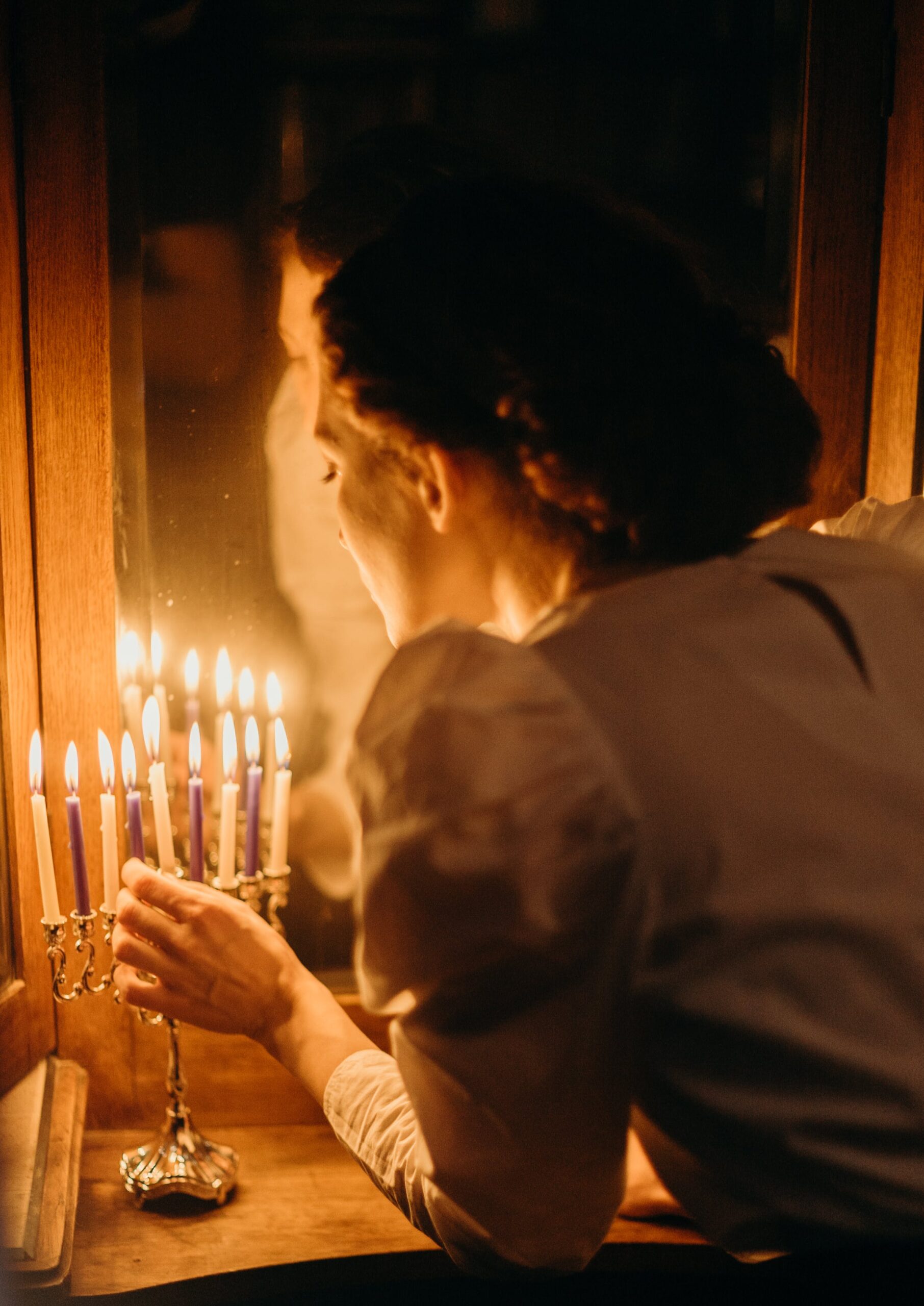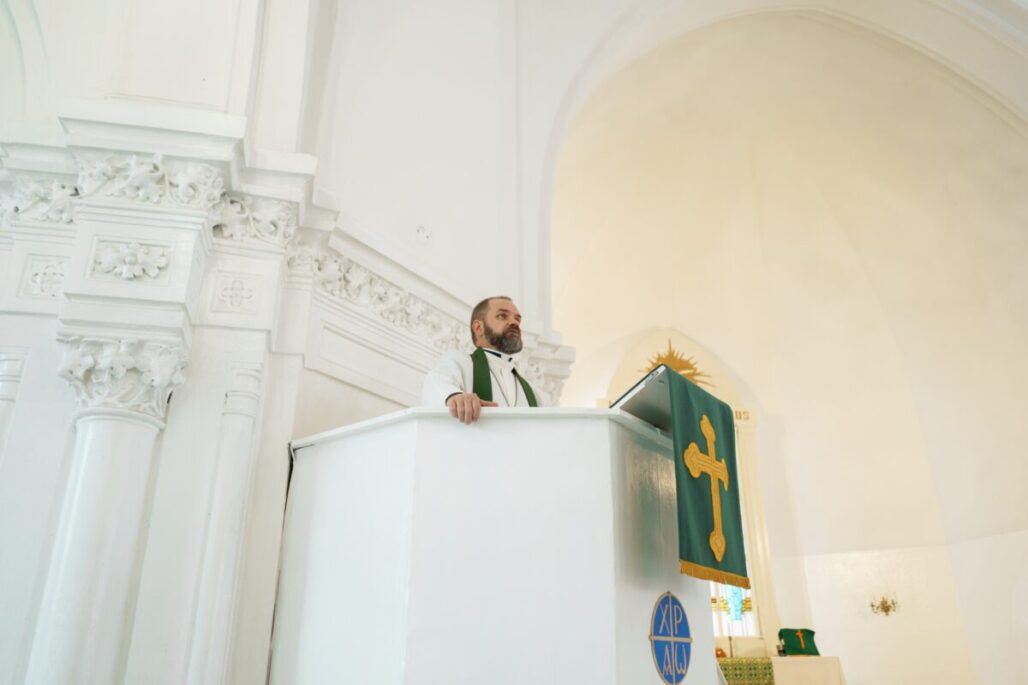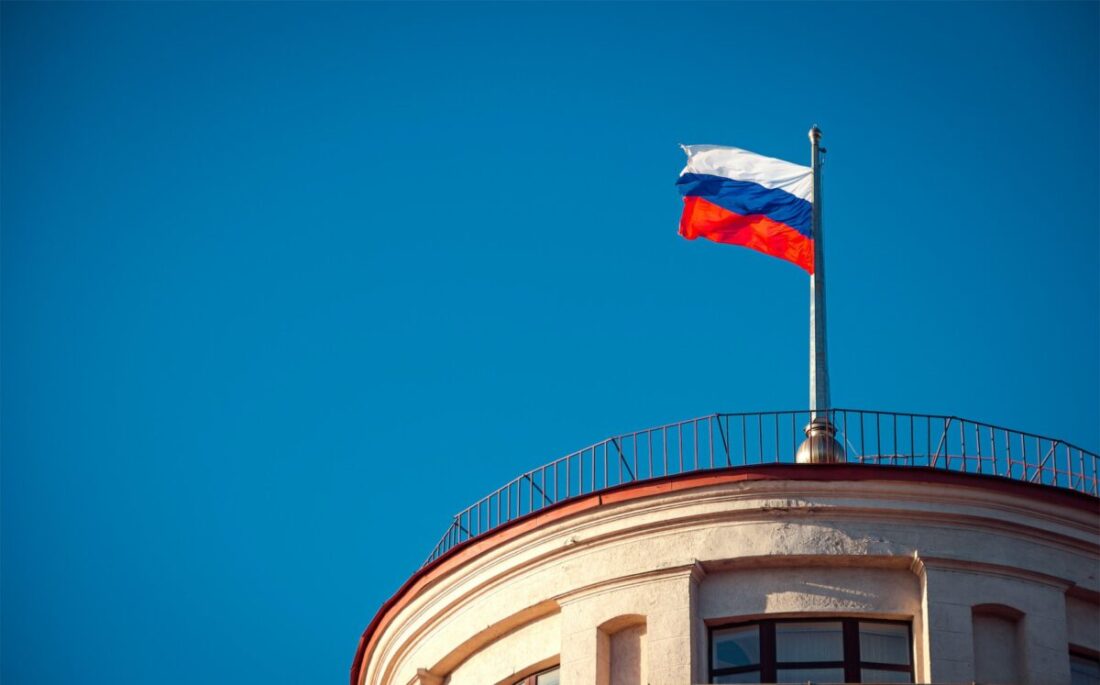October 5, 1793 is considered the starting date of the policy of abolishing Christianity in France. What this process was, how it relates to the Great French Revolution and what its consequences are for Christians, not just for France, read about it below.
Vendée Revolt
During the French Revolution, Christianity was in serious danger. It was shaken and swayed by the stormy onslaught of persecution, it bent under the pressure and perhaps Christianity would have been rooted out if the pressure had continued.
In pre-revolutionary France, under the “old order” (under the king), the clergy had a privileged position as the first estate, which was very closely related to power.
Church at that time mainly meant the Catholic Church. However, the anti-religious movement in 1793 harmed both Protestant churches in France – the Lutherans and the Reformists. At the moment when the new France was born, all of Christianity was attacked, not just Catholicism.
During the revolution, the church became a target of state persecution.
Life “before” the revolution
As Alphonse Olard writes, during the closing years of the old regime and the beginning of the Revolution, Christianity seemed to flourish in France.
France was dominated by the Roman Catholic Apostolic religion. This was the faith of the king who was called the most Christian king. It was the faith of the people whom the popes called the oldest daughter of the church. The French were respected as witnesses of one – the Catholic faith. The religious unity for which Louis XIV and XV so strived was probably realized and it was more than a mere appearance, for there were very few non-Christians and very few non-Catholics in France.
The Jews were non-Christians: they were tolerated and they formed small communities living mainly in the south-west, east and Paris, while individual Jews were scattered in many cities. However, the presence of Jews did not affect the religious unity of France in the slightest, since they were not considered French at all. They did not organize any propaganda, they were not popular, none of the contemporary sources of this era mention Catholics who left their faith and converted to Judaism. The Popes did not fear the faith of the Israelites. Sometimes they even contributed to the growth of the Jewish community.
As for the Protestants, since the edict of November 1878, a French citizen gained the right to openly call himself a Protestant. Non-Catholics thus became somewhat legalized. But still Protestants did not get complete freedom of confession, they could not hold public services, their faith was officially considered a shame, which they tolerated but hi, or rather, tolerated only when it was hidden.
No one then, in 1789, intended to de-Christianize France. Voltaire, who in his intimate letters demanded the “crushing of the unworthy (i.e. the church)” and demanded the destruction of the despotism of the church, thought that the people must maintain this or that religion at least as long as they are uneducated, that is, for a very long time. Buffon and the philosophers also thought the same way. Rousseau, who calls himself the enemy of the philosophers, only wanted to simplify Christianity and return it to the fascination of the primitive ages.
How Christianity was removed and what it entailed
The act by which the members of the Constituent Assembly inadvertently started a war of faith was the decree of November 2, 1789, in which the assembly declared that all the property of the church must be handed over to the people in order to get rid of a terrible financial crisis. But at the same time, the assembly very prudently emphasized the state’s obligation to “appropriately bear the costs of carrying out the service, maintaining the clergy and helping the poor”. In order to give hope to the lower clergy and to preserve their aid and favor against the revolution, the assembly declared in the same decree that in the regulations for the maintenance of religious servants, this allowance should be provided with an income which should in no case be less than 1,200 livres a year, exclusive of the apartment and adjoining gardens. For the lower clergy, this created the prospect of experiencing real prosperity instead of poverty. For the higher clergy, it was a sharp drop in income that deprived them of their former luxuries as well as prestige. From that moment on, almost all the higher clergy rushed into the fight against the revolution. It was here, especially after the decree of December 19, 1789 ordered the sale of 400 million church property (as well as property of the crown), that in two decrees of November 2 and December 19, 1789, the bourgeois religio-political war began, which first set the new France and the old religion in mortal danger.
1790
The civil structure of the Church: clergy are subject to state certification, all clergy are required to take an oath of allegiance to the state. This led to the division of “sworn” and “non-sworn” priests. The issue of church lands, statues, icons and church paraphernalia.
With the great decree of February 19, 1790, the assembly forbade entry to the monastery and liquidated all monastic orders and congregations. Members of these orders were given the right to withdraw from them freely: they were assigned a suitable pension (the amount was determined by various other regulations). Those who would refuse to leave the order had to be given a suitable place to live. Those regulations were meant only for men. The nuns could stay where they lived before the decree. As for the White Clergy* Congregation, there were many propositions in the Assembly concerning them, but the Assembly did not reveal these considerations.
This abolition of the black clergy** did not make much of an impression, but it made many monks enemies of the revolution.
*white clergy (married or celibate clergy who were not monks)
**black clergy (monks)
The subordination of the church to the state became even more noticeable and sensitive matter on November 27, 1790, when the assembly developed a form of oath that all clergy had to take. It was an oath of allegiance and obedience to the constitution of the citizens. But in practice, this obligation to swear allegiance to a civil constitution meant the destruction of the unity of the church and state and led to strife heralding the coming civil war.
1791
The state ascribes to itself the rights to register marriages, births and deaths (secular registry office).
On August 27, 1791, the legislature decided that the births, marriages and deaths registration should be determined by the future National Assembly. However, at the same time, this decree revealed the spirituality that this registration should carry, as it stated that “the law sees marriage only as a social contract”. The Legislative Assembly entrusted the registration of civil status acts to municipal officials, establishing a procedure that is still in place today. At the same time, it dealt another serious blow to religion by creating and allowing divorce as a consequence of a section of the constitution which stated that “marriage shall be regarded by law as a social contract only”.
1793
Of all the events that brought France to such a state of mind that it wanted to get rid of Christianity, the most important and influential was the Vendée Revolt. It is entirely possible that without the Vendée there would have been no cult of mind.
A direct consequence of this uprising was the strengthening of punishments for priests who did not take the oath.
In the autumn of 1793, a campaign of “annihilation of Christianity” was launched under terror: clergy were exiled and executed, churches were closed, monuments were destroyed, clerical services and education were banned, priests were forced to marry and resign. By 1794, 20 000 priests had left their position. On the cemeteries there was an inscription: “Death is eternal sleep”. Following the anti-Christian program, the proportion of practicing Catholics dropped by 50%.
On March 13, 1793, the convention imposed the death penalty on priests who participated in riots due to recruitment by the military. On the same day, the convention decided that if the priests who have been expelled from the borders of France are found in French territory, they would be tried by military court and executed within 24 hours. On April 23, the convention passed a resolution according to which churchmen who did not take the oath of liberty and equality should be immediately exiled to Guyana.
Thus, this law put into legal question both the clergy of the Catholic Church who took the oath, as well as the clergy who did not take the official oath, as well as the clergy who were removed from office.
Not long ago, good priests were pitted against bad ones. Now the belief spread that there were no more good priests. The Catholic religion was discredited in the minds of many militant patriots. The conviction became more and more widespread that the cult needed to be abolished because it was an obstacle to national defense and revolution.
The cult of “mind” and the “supreme being”
The de-Christianization movement spread rapidly in Paris. Almost all church sections renounced the cult, closed their parish churches, and then reopened them as temples of reason. It was an atheistic cult discovered in 1793 under the leadership of Jacques-René Hebert and the bloodthirsty Jacques Fouche. The main values of the cult were truth and freedom. All over France, churches were transformed into temples of reason and November 10, 1793, was declared as the Feast of Reason. A statue of the goddess of reason was placed in Notre Dame Cathedral. The cult of reason was almost universally deistic (not materialistic or atheistic). In Paris, where people took part in it, it had a cheerful and fun character. Despite the pedantry of some scribes, it carried a mischievous sense of humor. Provincial cities took the cult of reason seriously. At least in the provincial towns there was a serious and sincere effort to abolish the old religion and to establish a rational cult in its place. The goddesses of reason were not represented there by actresses or mischievous workers, but by beautiful young girls, virtuous and serious, belonging to the colors of the bourgeoisie (this is not denied even by the most hostile witnesses).
By the spring of 1794, the cult of reason had lost its popularity and the revolutionary deist Robespierre patronized a new cult of the Supreme Being.
This cult of the Supreme Being seemed to some contemporaries, in retrospect, not only official, but also as a popular reaction against the Cult of Reason. It is said that some ignorant Catholics had so confused the meaning of this cult that they saw it as the first step towards the restoration of Catholicism.
And under the shadow of the Supreme Being and under the name of Reason – in those times, the French worshiped first of all the fatherland and the Supreme Being and the cult of reason, soon had to in the eyes of the people merge with patriotismand drown in it.
1795
In the end, when military victories put an end to the terror, it seemed that the relationship of the church with the state became unthinkable, in view of the counter-revolutionary position of the entire clergy, even the constitutional clergy. At the same time, now that the revolutionary pressure had weakened, the violent destruction of Christianity began to seem unthinkable.
On September 29, 1795, the Convention adopted the Great Law on the Government of Religions, which included all previous laws.
This law again proclaims the principle of freedom and their separation from the state. He gives a new oath formula: “I acknowledge that the assembly of citizens of France is the highest authority and I promise to obey and submit to the laws of the republic.” This law establishes a number of guarantees to make any religion the sole and dominant religion. No religious ceremony could be performed outside the designated temples. The only exceptions were private houses, if no more than ten believers gather in them.
This law made it possible to revive that Catholicism, which had recently seemed to be finally crushed by the pressure of the Revolution, among a people which was religiously disintegrating into an infidel minority, a religious minority and an indifferent mass.
From 1795, religion was allowed again, although until 1799 priests were arrested, imprisoned, exiled and persecuted. And in 1801, the Concordat was signed with Napoleon, which confirmed the Catholic faith as “the faith of the majority of the French.” A similar concordat was concluded with Protestant Christians.
Conclusion
Most historians believe that the Great French Revolution, as part of which Christianity was abolished, had great international significance, it contributed to the spread of progressive ideas throughout the world and brought with it a series of revolutions in Latin America, as a result of which the latter was freed from colonial dependence and several other events – in the first half of the 19th century. Despite the fact that these events took place far back in the 18th century, the processes of de-Christianization continues even today.
In recent decades, a process of transformation of Christianity has been observed in the West. It has several dimensions. This manifests itself in the decrease of the number of people who publicly call themselves Christians, the consolidation of norms that are contrary to Christian ethics and the actual violation of Christian rights and may lead to the fact that the norms of Christian culture no longer seriously influence the behavior of people living in the West. Thus, the loss of Christianity may mean that Christian ethics cease to influence the daily economic behavior of people in Western countries.
And here is the data from international organizations: every five minutes one Christian is killed in the world. About three hundred christians are killed per day and over 100 000 are killed per a year. Today, Christians are persecuted like never before – neither in the Roman Empire nor in the Soviet Union.
There were one and a half million Christians in Iraq – 150,000 of them remain; One and a half million in Syria – 500,000 left. In Nigeria, radical fundamentalists are committing atrocities, killing Christians and destroying entire villages. The same is happening in Pakistan, Afghanistan – no protection. A person is killed just because he goes to church on Sunday and no one protects him.










